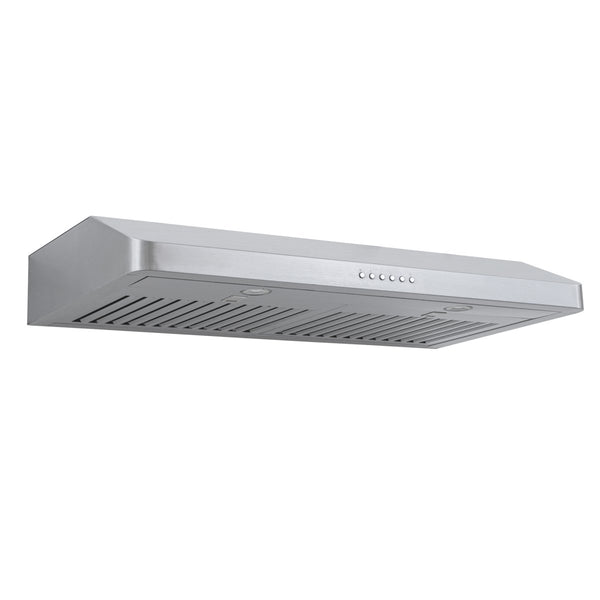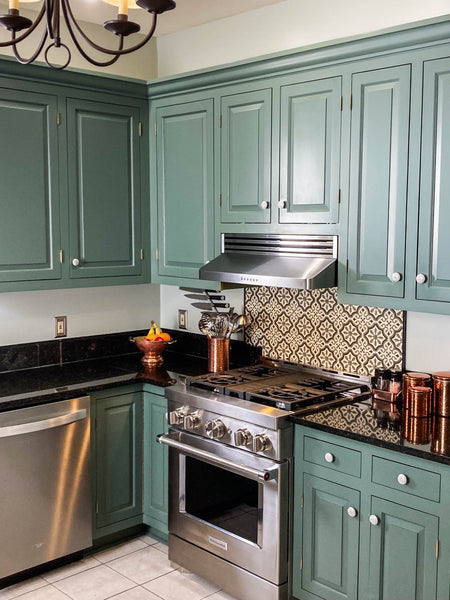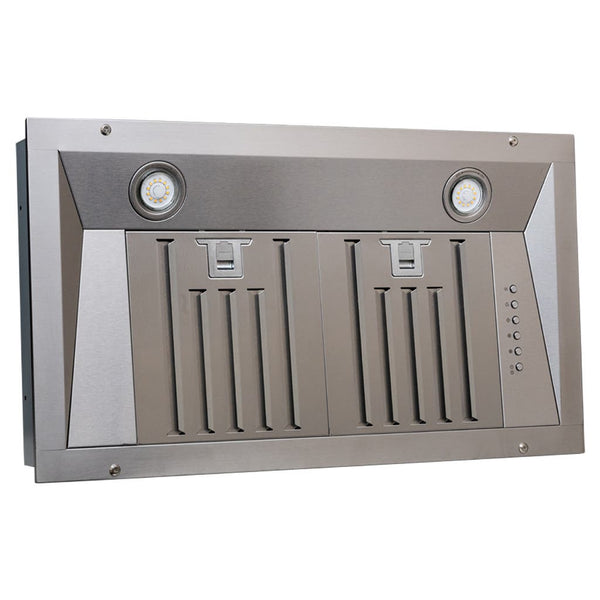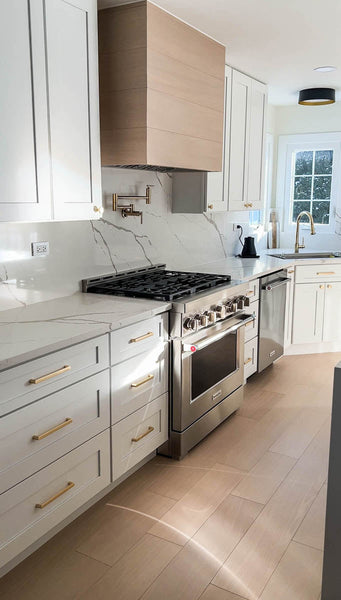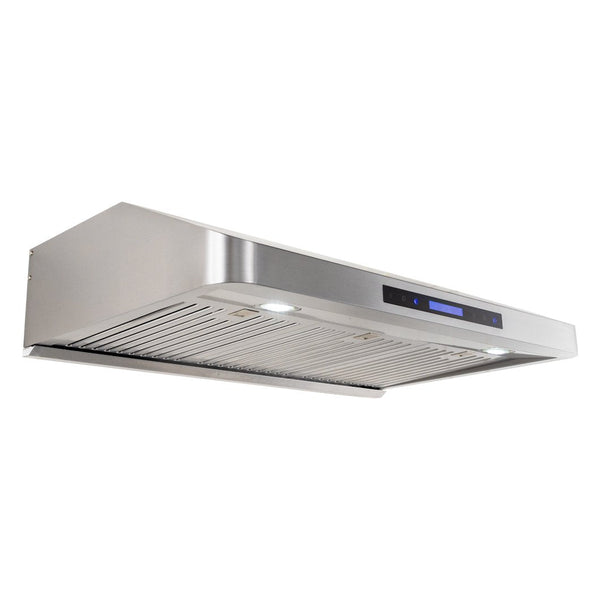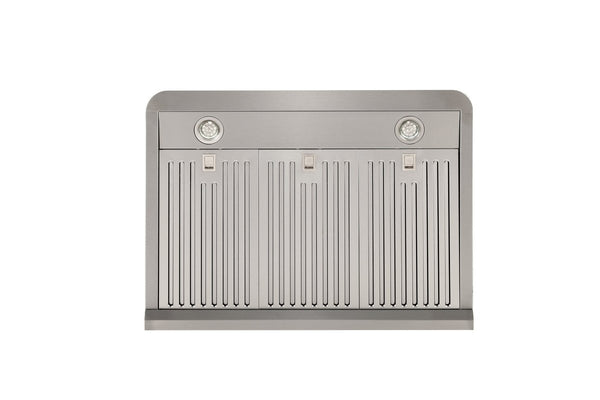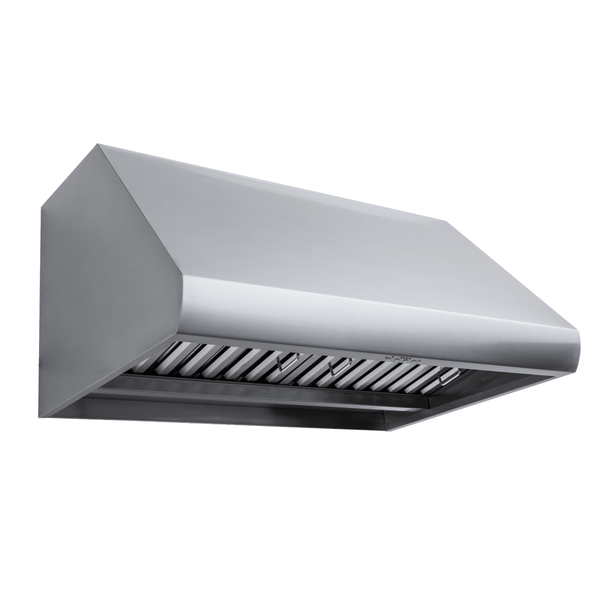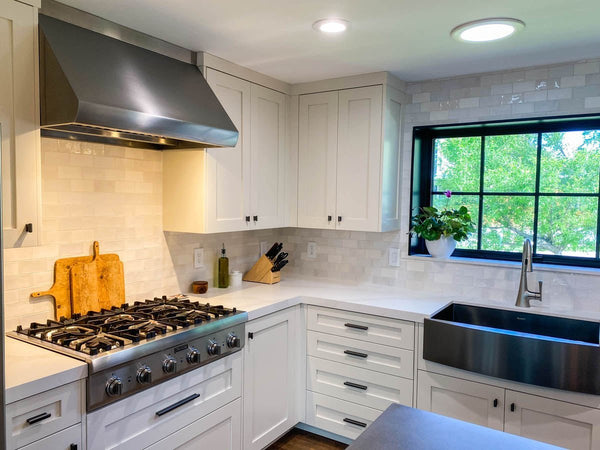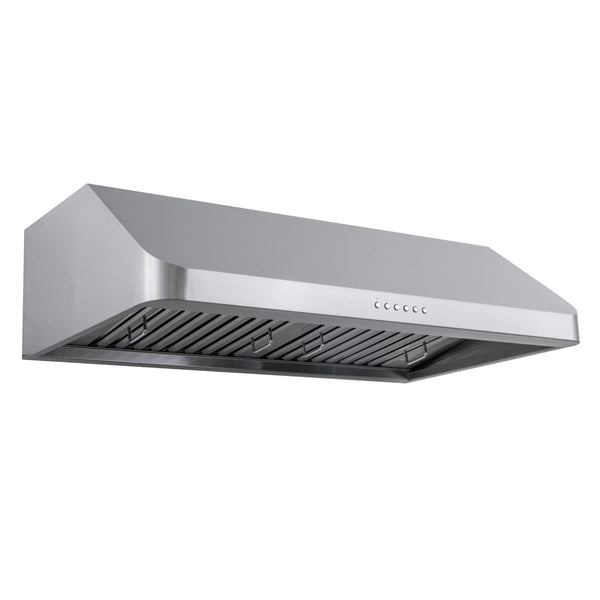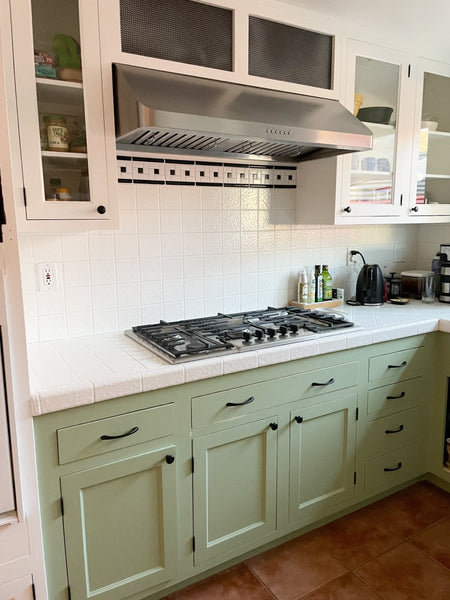Table of Contents
The Short Answer: YES. If you have an outdoor kitchen, especially one under a canopy, pergola, or covered area, you absolutely need an outdoor range hood. Not only is it essential for your health and safety, but in many cases, it's actually required by law.
What is an Outdoor Range Hood?
An outdoor range hood, also called an outdoor exhaust hood, is a ventilation system specifically designed to remove smoke, grease, heat, and cooking odors from outdoor cooking areas. They come in under-cabinet, wall mounted, and island models.
Unlike their indoor counterparts, outdoor range hoods are built to withstand weather elements with Prolines innovative 304 stainless steel. These type of hood while provide powerful ventilation for outdoor grills, cooktops, and other cooking appliances while maintaining durability.
These systems work by capturing cooking emissions at the source and either filtering them or venting them away from the cooking area, preventing the buildup of harmful pollutants in your outdoor space.
Your Health Matter: Why Air Quality Matters in Outdoor Cooking
The Hidden Dangers of Cooking Emissions
Recent studies have shown that cooking produces significant quantities of nitrogen dioxide, carbon monoxide, and ultrafine particles smaller than 100 nanometers, which are dangerous because they can move around your body in ways that larger particles can't. While you might think outdoor cooking automatically provides better ventilation, this isn't always the case.
Research comparing indoor and outdoor cooking found that while outdoor cooking generally produces lower pollution levels, contamination was still present and measurable, with particulate matter (PM2.5) levels ranging from 20.63 to 23.72 μg/m³ (micrograms per cubic meter) in outdoor cooking areas.
The key pollutants your outdoor range hood will help eliminate include:
A respiratory irritant that can worsen asthma
A potentially deadly gas in enclosed spaces
Linked to heart and lung problems
Can cause headaches and respiratory issues
Create fire hazards and unhealthy air quality
The Legal Requirements: When Outdoor Range Hoods Are Mandatory
Building Code Requirements
Several states have adopted codes that go beyond national standards, requiring the installation of range hoods in both residential and commercial kitchens to ensure effective ventilation. While most codes focus on indoor kitchens, many apply to covered outdoor cooking areas as well.
States with specific range hood requirements include:
Mandates range hoods in residential kitchens, especially those producing 100 CFM or more intermittently, with installation ensuring that the hood discharges outdoors
Requires range hoods capable of moving at least 100 CFM intermittently or 25 CFM continuously, with clear directive that hoods must vent to the outdoors
State Building Code mandates range hoods capable of providing at least 100 CFM intermittently or 25 CFM continuously
When It's Not Just Recommended—It's the Law
The International Residential Code has specific things to say about kitchens, and it doesn't care if the kitchen is inside or outside the house. If your outdoor kitchen includes gas appliances and is considered a permanent installation, building codes likely apply.
You're especially likely to need permits and proper ventilation if your outdoor kitchen includes:
- Permanent gas lines
- Built-in appliances
- Covered or enclosed cooking areas
- Commercial-grade equipment
The Pros of an Outdoor Range Hood
Pros of Having an Outdoor Range Hood
Removes harmful cooking pollutants from breathing zone
Reduces grease buildup on outdoor furniture and surfaces
Increases home value with professional outdoor kitchen setup
Peer-Reviewed Research on Range Hoods and Air Quality
Stanford University Research
Stanford researchers measured pollutant levels in homes with gas cooking and found that range hoods are the most effective way to remove cooking pollutants, with proper ventilation capturing 50 to 70 percent of pollutants when cooking on back burners.
Key findings from the Stanford study:
- Gas burners produce significant quantities of nitrogen dioxide and ultrafine particles
- Range hood effectiveness varies significantly by design and installation
- Back burner cooking with range hood ventilation dramatically improves air quality
Lawrence Berkeley National Laboratory Studies
Lawrence Berkeley National Lab researchers found that in a study of Southern California homes where people cook at least once a week, more than half had air pollution levels worse than outdoor standards. Their ongoing research focuses on improving range hood effectiveness.
Research conclusions:
- Some range hoods tested are only 15 percent effective because their fans aren't powerful enough
- Hood shape and positioning significantly impact performance
- Range hoods that cover the entire cooktop and move at least 200 cubic feet of air per minute are most effective
International Air Quality Studies
Recent peer-reviewed research published in ScienceDirect found that air curtain range hoods could decrease the intake fraction by factor of 1.5–5 compared to traditional range hoods, and considerably protect people from exposure to pollutants.
"The goal of our work on kitchen ventilation is to help people cook all they want - with gas or electric - without exposing themselves to harmful air pollutants." - Brett Singer, PhD, Lawrence Berkeley National Lab
Conclusion: The Clear Case for Outdoor Range Hoods
The evidence is overwhelming: outdoor range hoods are not just recommended—they're essential. Whether driven by health concerns, legal requirements, or simple quality of life improvements, installing an outdoor range hood is one of the smartest investments you can make in your outdoor kitchen.
As Stanford researcher Brett Singer notes, "The goal is to help people cook all they want without exposing themselves to harmful air pollutants"—and that goal applies just as much to outdoor cooking as indoor cooking.
Sources and References:
